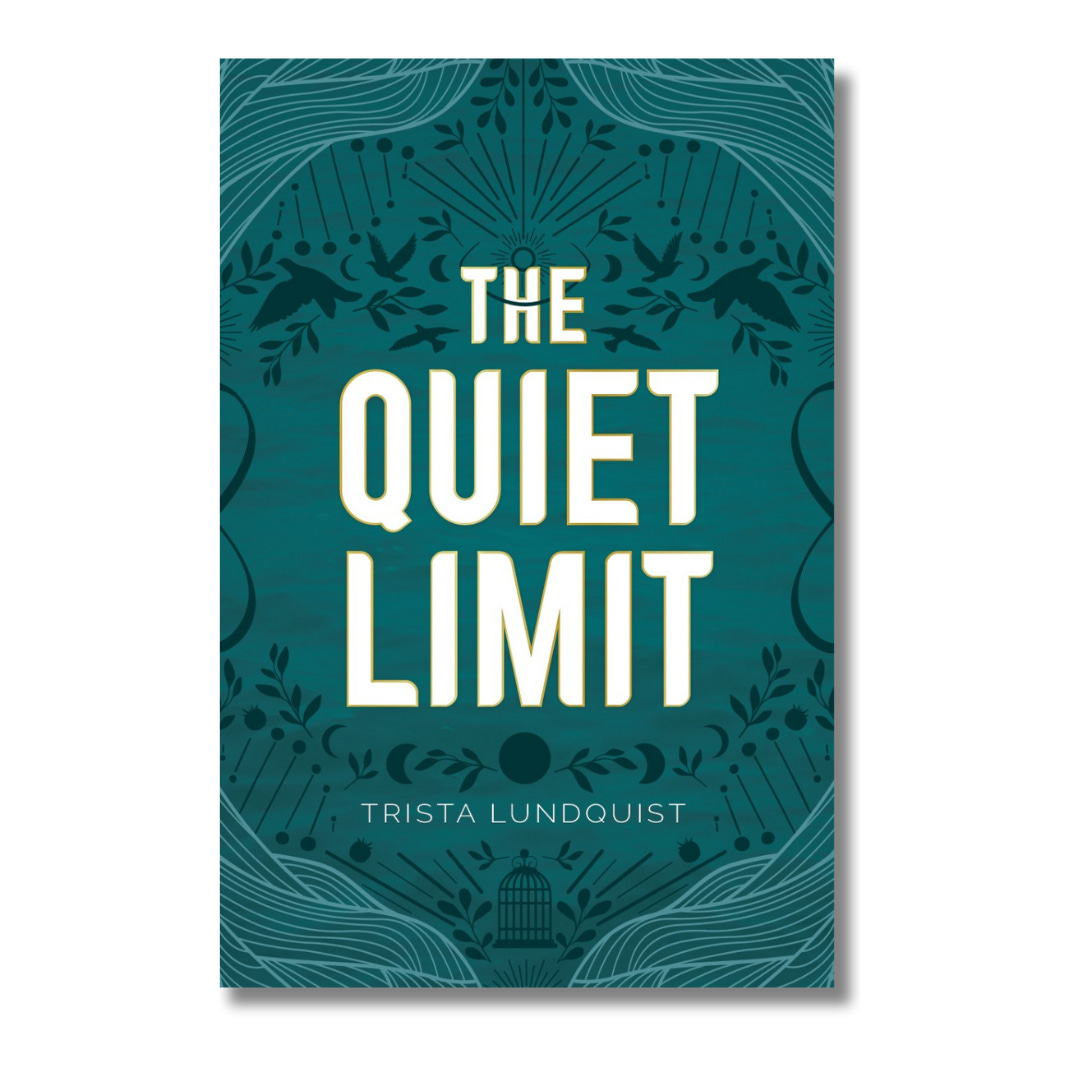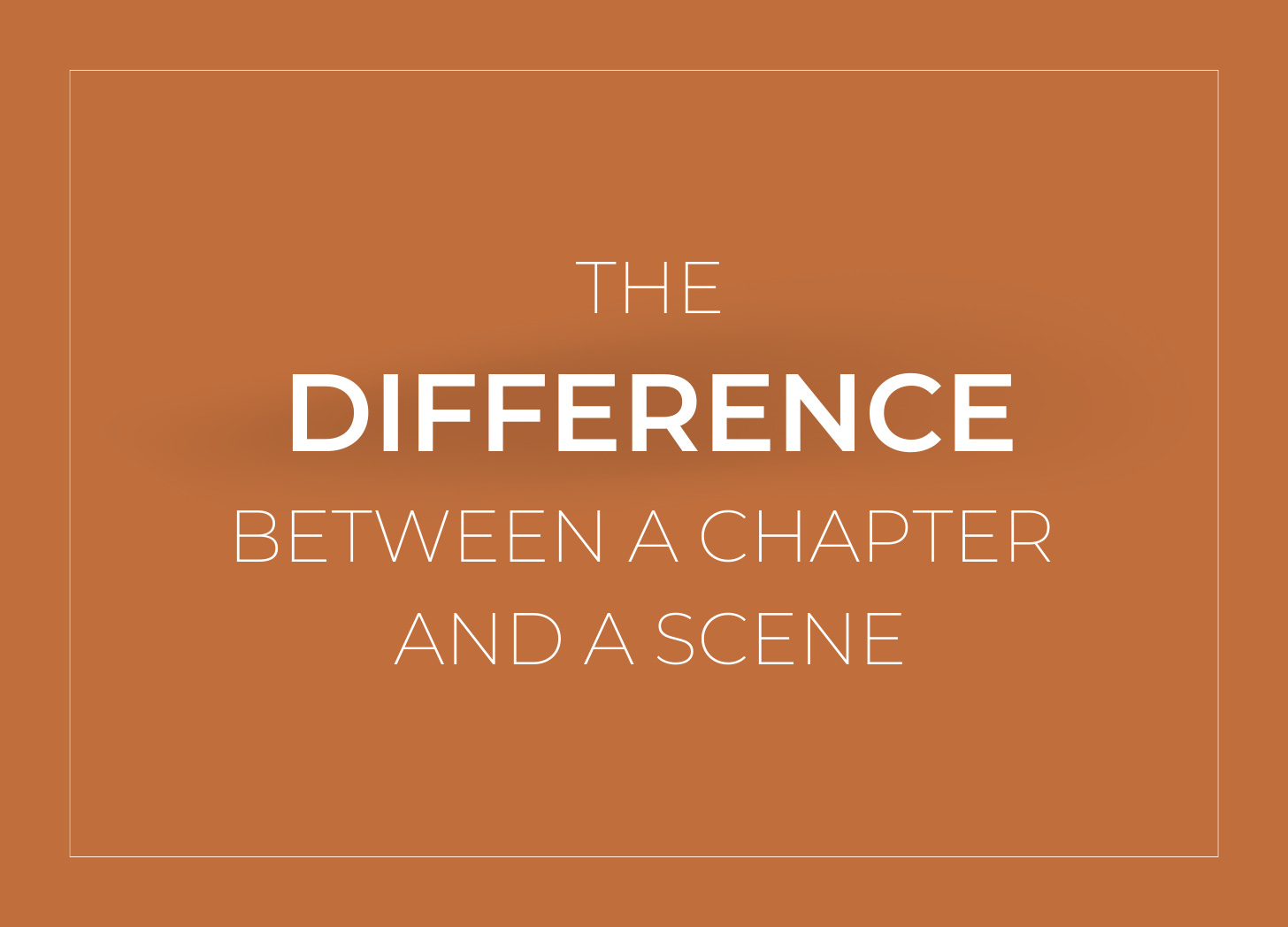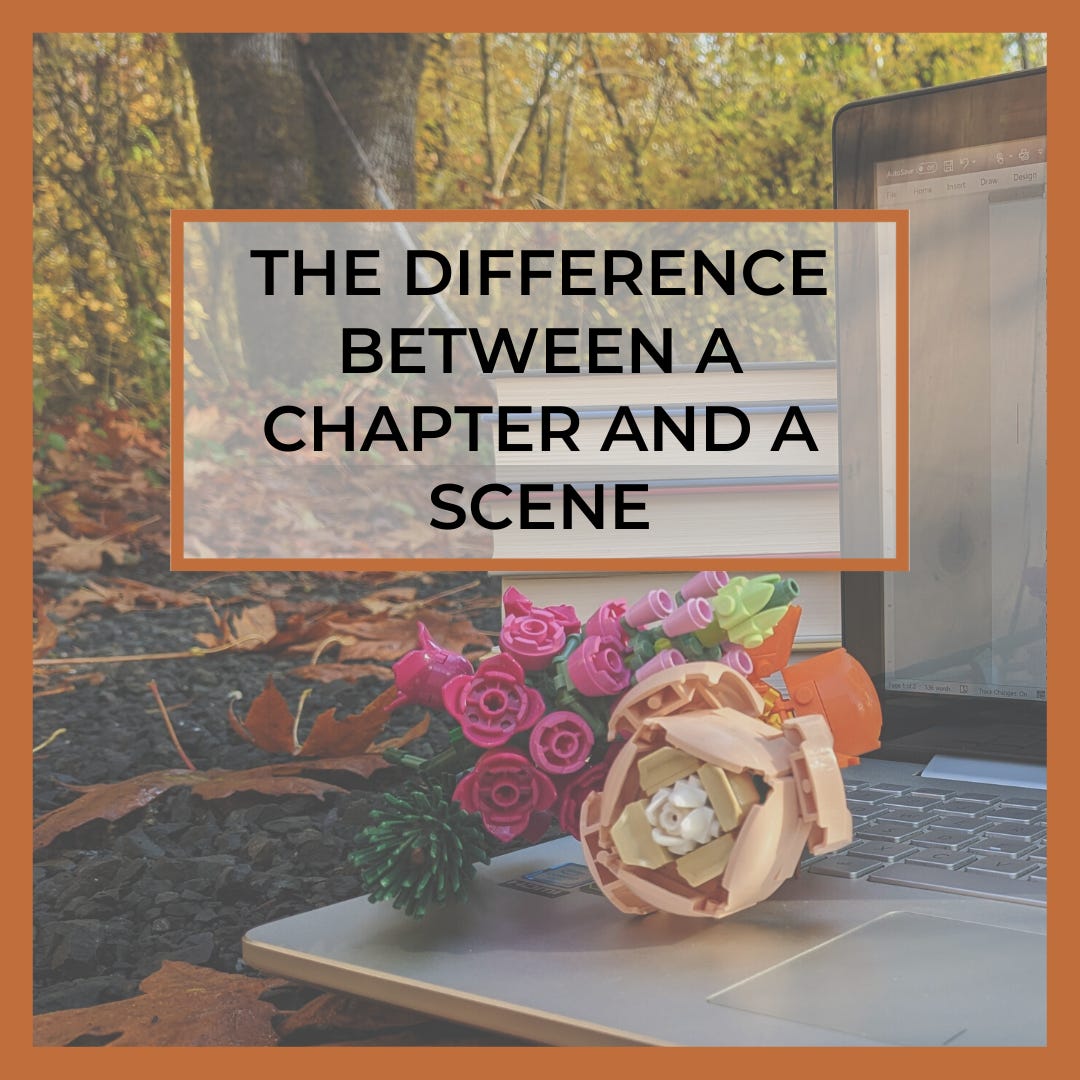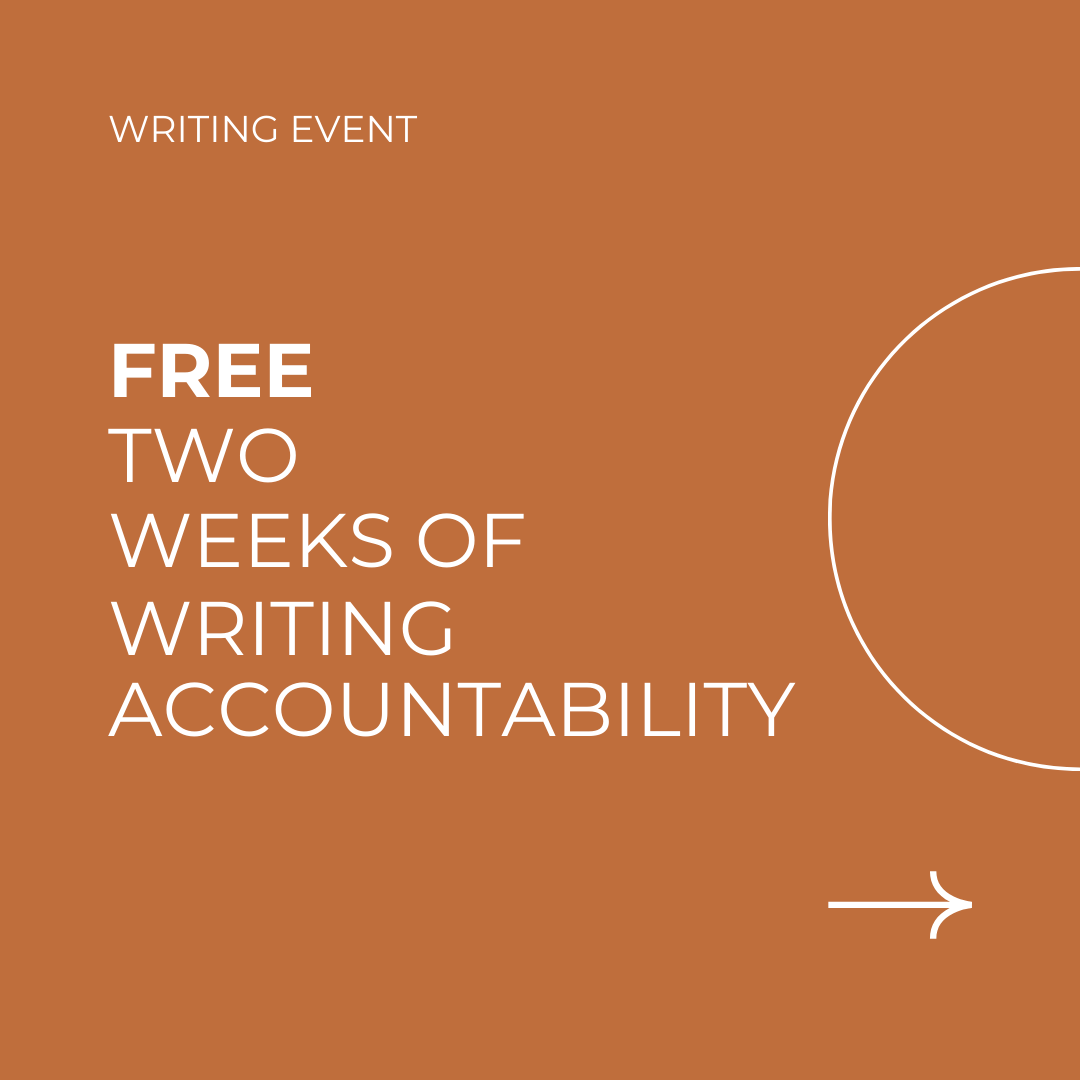Hello!
Here is what you will find in this month’s newsletter:
A blog post from revisionmuse.com shares the difference between a chapter and a scene.
An interview with Trista Lundquist about writing and publishing.
A writing accountability event.
And a discount for one lucky reader!
But first, here is an update on me before moving into the meat of the newsletter.
This month, I delved into Jane Alison's Meander, Spiral, Explode, a book that promised to explore unconventional plot structures. I approached it with the anticipation of uncovering new, practical ways to understand and craft narratives. However, the experience was quite different from what I expected.
"Meander, Spiral, Explode" is a title that evokes curiosity and the promise of innovation in storytelling. The book sets out to challenge the traditional arc of narrative structures, suggesting alternatives to the classic rise and fall of storylines we've come to expect. However, I found the book more theoretical than practical, resembling a collegiate-level literature course rather than a straightforward guide to narrative craft.
For those considering "Meander, Spiral, Explode," it's worth noting that this book might not align with expectations if you're looking for direct, applicable advice on plot structures. It's more suited to readers who enjoy deep theoretical dives into literary analysis. If you're up for a challenging, academic-style read that delves into the intricacies of narrative forms, this book could be intriguing. However, you might want to explore other titles if you're seeking a practical guide on crafting stories.
Now, enough about me. Let’s move on. :)
The Difference Between A Chapter And A Scene
Writing involves many technical aspects, and one of the key distinctions to understand is the difference between a chapter and a scene. Both are essential elements in storytelling, but they serve different functions and have distinct characteristics.
WHAT IS A CHAPTER?
A chapter is a larger book segment, usually marked with a number or a title. It acts as a structural division within the narrative, helping to organize the story. Chapters can vary in length and often shift the story’s focus.
Example of a Chapter:
Consider a chapter in a mystery novel titled “The Disappearance.” This chapter might start with the main character receiving an important letter, followed by several key events, like a conversation with a suspect and a visit to a crucial location, ending with an unexpected revelation.
WHAT IS A SCENE?
A scene is a smaller unit within a chapter. It describes a specific sequence of events that occur in one location and involves the same characters. Scenes are the components that make up a chapter, each contributing to moving the story forward, developing characters, or enriching the setting. Each scene has a goal, disruption, choice, turning point, reaction, and new goal—the key elements to good scene structure.
Example of a Scene:
In the chapter “The Disappearance,” one scene could involve the main character meeting a suspect in a café. The scene would focus on their conversation and the café environment and end when the meeting is over.
IMPORTANCE OF KNOWING THE DIFFERENCE BETWEEN A CHAPTER AND A SCENE
Understanding the distinction between chapters and scenes is essential for effective story structuring. Chapters offer a broader narrative section, while scenes provide detailed and immediate experiences that engage the reader. Recognizing how to use each element leads to better story pacing, character development, and plot advancement, and the ability to cut large chapters or smaller scenes when revising.
Organizational Flexibility: One key advantage of distinguishing between scenes and chapters is its flexibility in story organization. Scenes, being smaller and more focused units, can be rearranged more easily than entire chapters. This flexibility is crucial during the editing process, where reordering scenes can significantly enhance the narrative flow without disrupting the larger structure of the chapters.
Focused Revision: When editing, it’s often easier and more efficient to revise individual scenes rather than entire chapters. This approach allows you to fine-tune specific aspects of their story, such as dialogue, character interactions, or setting details, without overhauling large portions of their manuscript.
Enhanced Narrative Flow: Understanding how scenes fit within the broader context of a chapter can help you create a more seamless and engaging narrative. This understanding ensures that each scene contributes effectively to the chapter’s overall purpose and, by extension, to the story as a whole.
By differentiating between chapters and scenes, you gain more control over the structure and pacing of your narratives. This clarity not only aids in the initial writing process but also makes subsequent revisions and reorganizations more manageable, ultimately leading to a more cohesive and compelling story.
CHECKLIST FOR IDENTIFYING SCENES IN YOUR WRITING
Using this checklist, you can better determine whether you are working on an individual scene or constructing a larger chapter. This awareness can help you organize your writing.
1. Scope and Detail:
Scene: Are you focusing on a specific moment or event? Does it play out in real-time with detailed descriptions of actions, dialogue, and settings?
Chapter: Are you covering a broader range of events or periods, possibly encompassing multiple scenes or settings?
2. Character Presence:
Scene: Does the segment involve consistent characters interacting in one setting?
Chapter: Are you switching between different characters’ perspectives or locations?
3. Continuity:
Scene: Is the narrative continuous, without jumps in time or location?
Chapter: Does the section include transitions that move through different times or settings?
4. Narrative Focus:
Scene: Are you detailing a specific interaction or event that is part of a larger story?
Chapter: Are you developing the story across multiple scenes, each contributing to the chapter’s overall theme or goal?
5. Length and Complexity:
Scene: Is the segment relatively short and focused on a single event or interaction?
Chapter: Is the segment longer, potentially weaving together multiple scenes or narrative threads?
6. Transitions:
Scene: Does the segment begin and end in the same setting or time frame?
Chapter: Does the segment contain multiple transitions between scenes or narrative elements?
7. Emotional and Narrative Arc:
Scene: Does the segment have a micro-arc, with a clear beginning, middle, and end focused on a particular moment?
Chapter: Does the segment encompass a broader arc, combining various scenes to build the story’s larger narrative?
8. Purpose and Contribution:
Scene: Are you conveying a specific point or piece of the narrative puzzle?
Chapter: Are you aiming to advance the overall plot or character development across multiple scenes?
Conclusion
In summary, the ability to distinguish the difference between chapters and scenes is important when creating a compelling narrative. Chapters organize the broader narrative, while scenes provide depth and detail within these segments. This understanding is key to structuring a story effectively, enhancing narrative flow, and facilitating easier revisions. The provided checklist serves as a practical tool for you to identify and focus your efforts on the specific elements of your story, whether crafting an intricate scene or developing a comprehensive chapter. Mastering this storytelling aspect enables you to weave your narratives with greater precision and impact, ultimately leading to richer, more engaging stories that resonate with readers.
An Interview with Trista Lundquist

Trista Lundquist, a self-published author, generously answered some questions on writing and publishing.
What is your favorite writing tip or technique, and how has it helped your process?
My favourite writing tip by far is: Show, don't tell. As a writer, it's really easy to get stuck in "telling" your story and forget that readers don't want to have a story "told" to them, they want to become fully immersed in the story, in the world, the characters. I often go back through my writing, and when I find instances of "telling," I ask myself, is there a way I could show this instead?
What do you do to get over writer's block?
Two things. First, I step away from writing for a bit. Go for a walk. Read. Clear my brain. Second, I jump ahead in my piece, or I go back and re-work sections I've already written. Oftentimes, I know there's an upcoming scene I'm excited about and working on that makes it easier to go back to the place where I was stuck.
What is one thing you wish you had known about self-publishing before going through it yourself?
How long the process can take. Patience is not a strong suit of mine. Finishing writing your first novel is such a monumental accomplishment, but when it comes to publishing, it's just a step in the process.
Are you a plotter or a pantser?
Pantser. It's strange because I'm incredibly organized and need to plan everything in my life, but with writing, I need to see where the characters and the story take me. It just feels more organic and real to me, and I really enjoy the ride.
What's your drafting process like?
Nothing fancy. I prefer to write in Google Docs so I can have access to my novel at any time. In addition to my WIP, I keep a second document with character information, timeline, notes, etc.
How do you find time to write while managing other responsibilities?
Little bits here and there. With two busy kids, a full-time job, and all my other responsibilities, it's tough to block out large chunks of time to write, so I rely more on a half hour here and there (although sometimes I'll ditch everything and head out to Starbucks for a few hours with my laptop, ha). I will say, what makes it easy is I truly enjoy writing. It's a passion and my favourite hobby, so it never feels like a chore.
What is one "rule" or writing advice you purposefully break?
"Plan your novel first.” When it comes down to it, it takes the fun out of it for me, and my writing suffers.
Would you like to be interviewed in an upcoming newsletter?
Get Ready for Two Weeks of Focused Writing!
If you want some writing motivation, I've got just the thing to help you!
📅 Mark Your Calendars! The two-week (minus weekends) writing accountability event is right around the corner! Starting on February 12th and running until February 26th, you’ll get inspiration to keep your writing habit going, to start a new one, or to get back into a routine.
👩💻 How It Works During the event, you will receive daily emails with motivational posts to keep you writing on the weekdays. Then, you will be invited to check in daily with your word count and engage with a community of fellow writers. It's a structured way to stay accountable, share your progress, and glean inspiration from others in the same creative boat.
📝 Sign Up to Join! You'll need to sign up to make the most of this opportunity. Once you're in, you'll have access to daily check-ins, motivational posts, and a supportive community of writers working toward the same goal—daily writing.
Discount Time!
I'm offering a 15% discount to the first person who books a developmental edit with me! So, if you have been thinking about hiring an editor, now’s the time!
This is exclusive to those who have signed up for my newsletter as a thank you to all of you. :) Just let me know when we talk that you would like the developmental edit promo from the newsletter.





